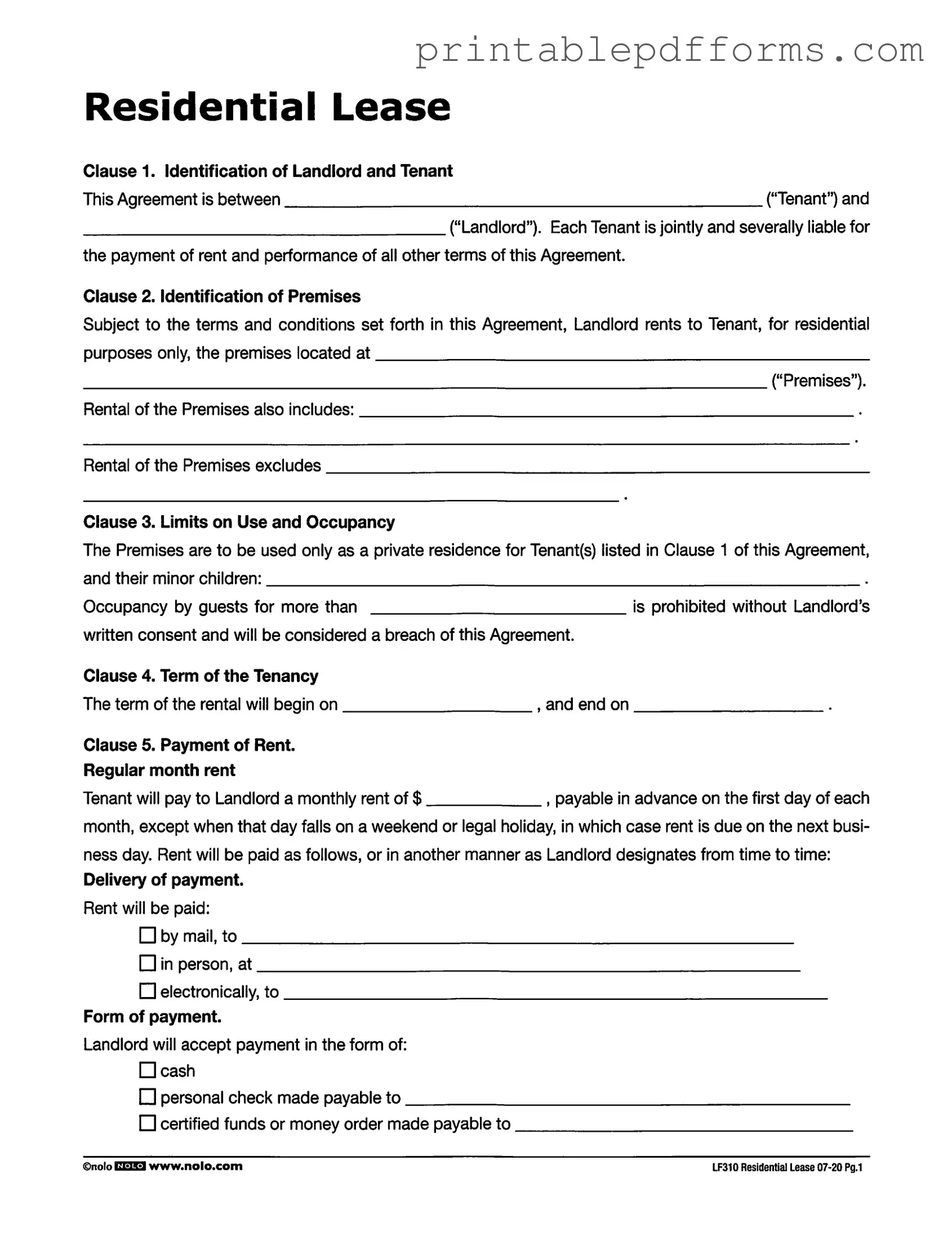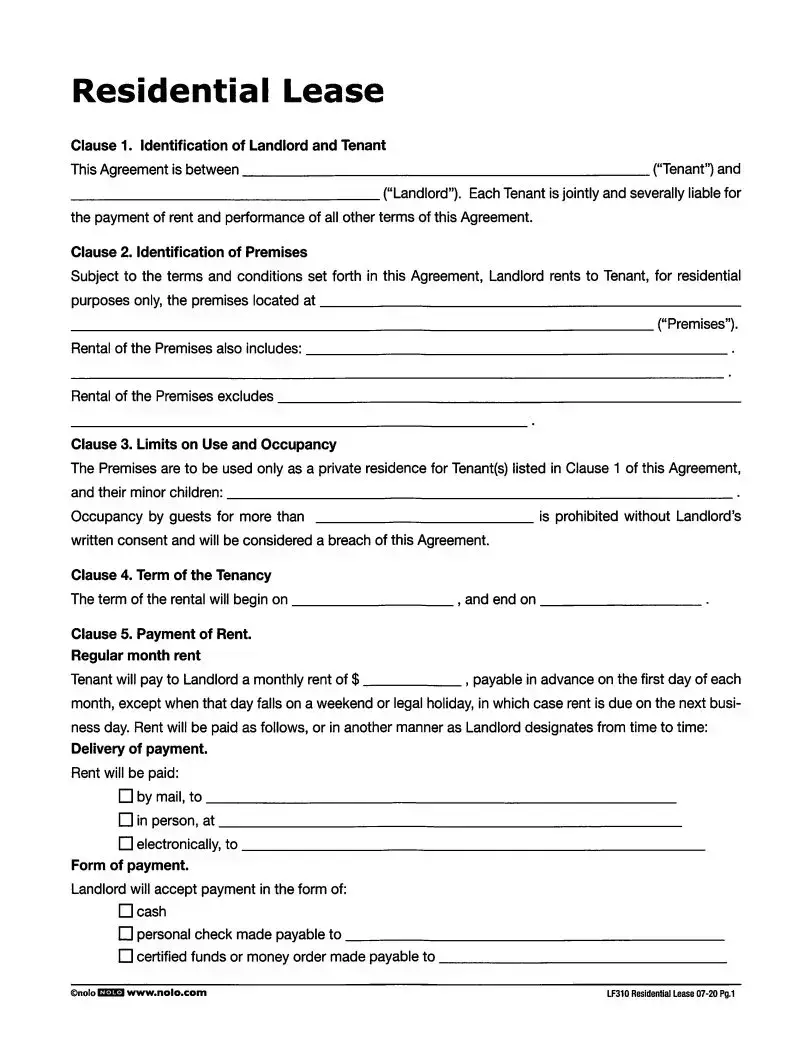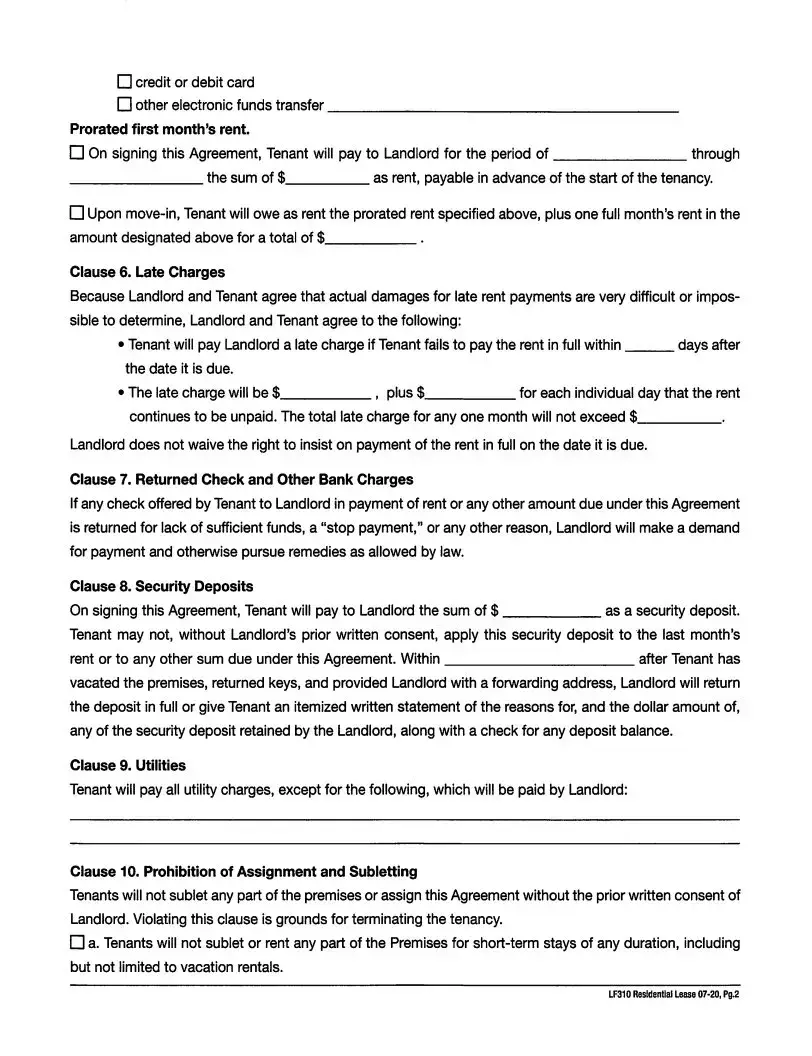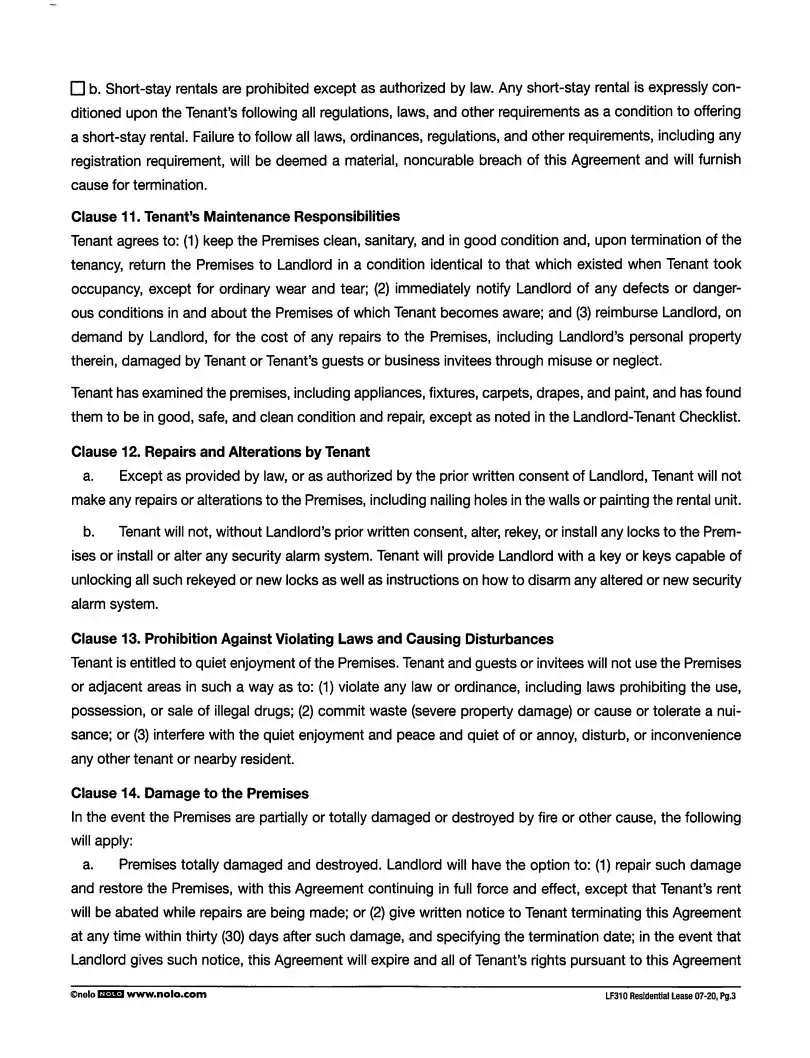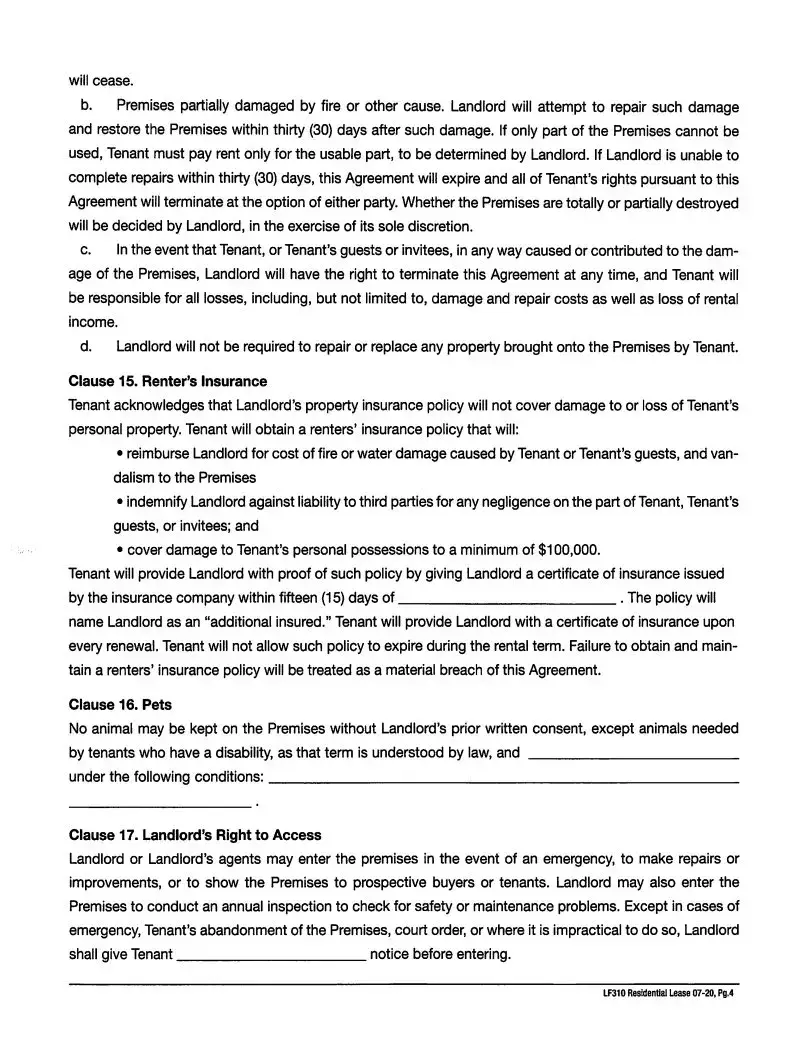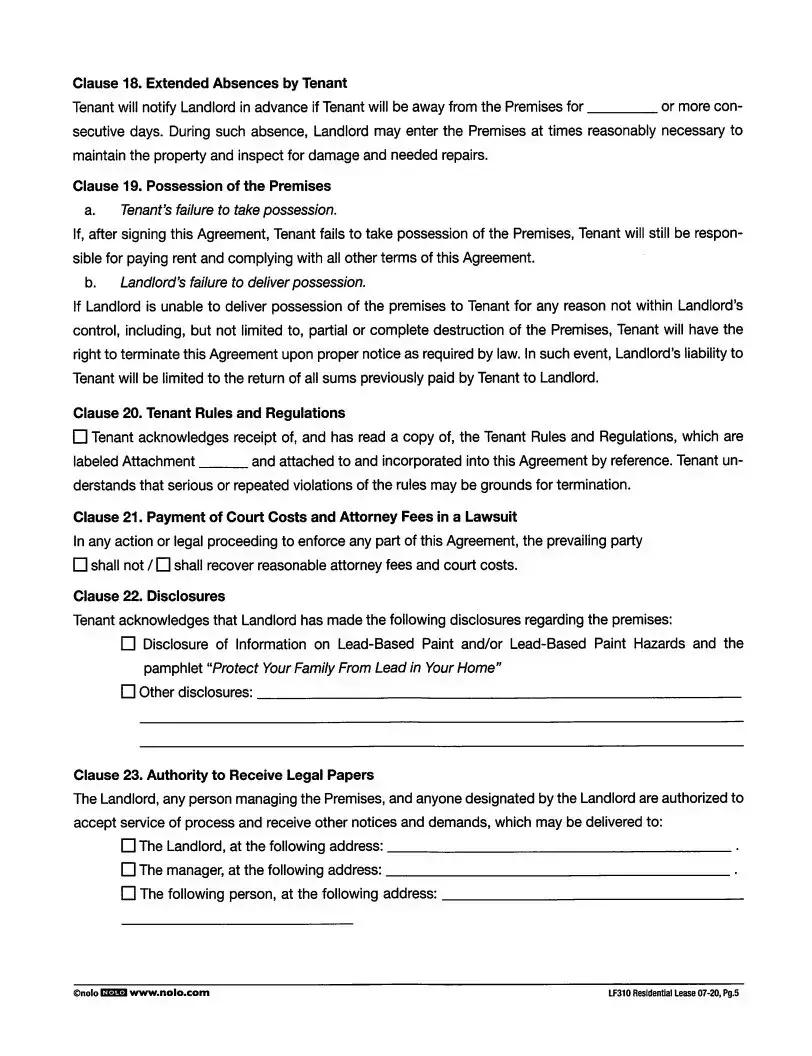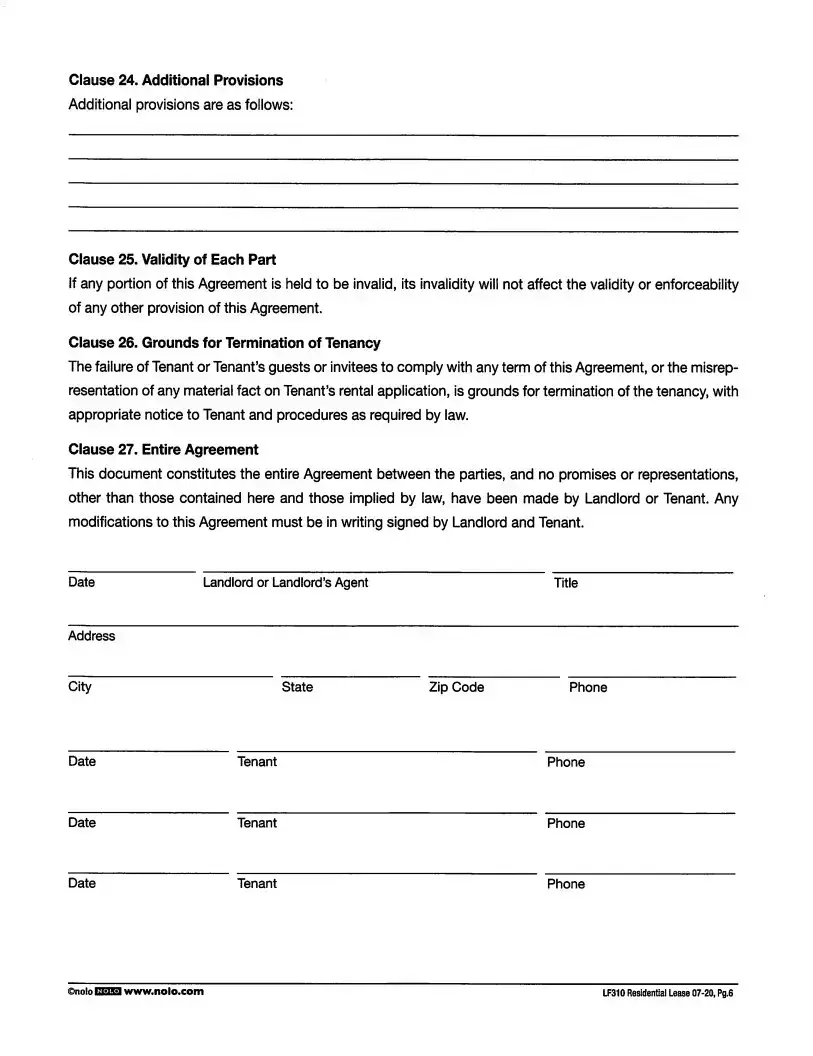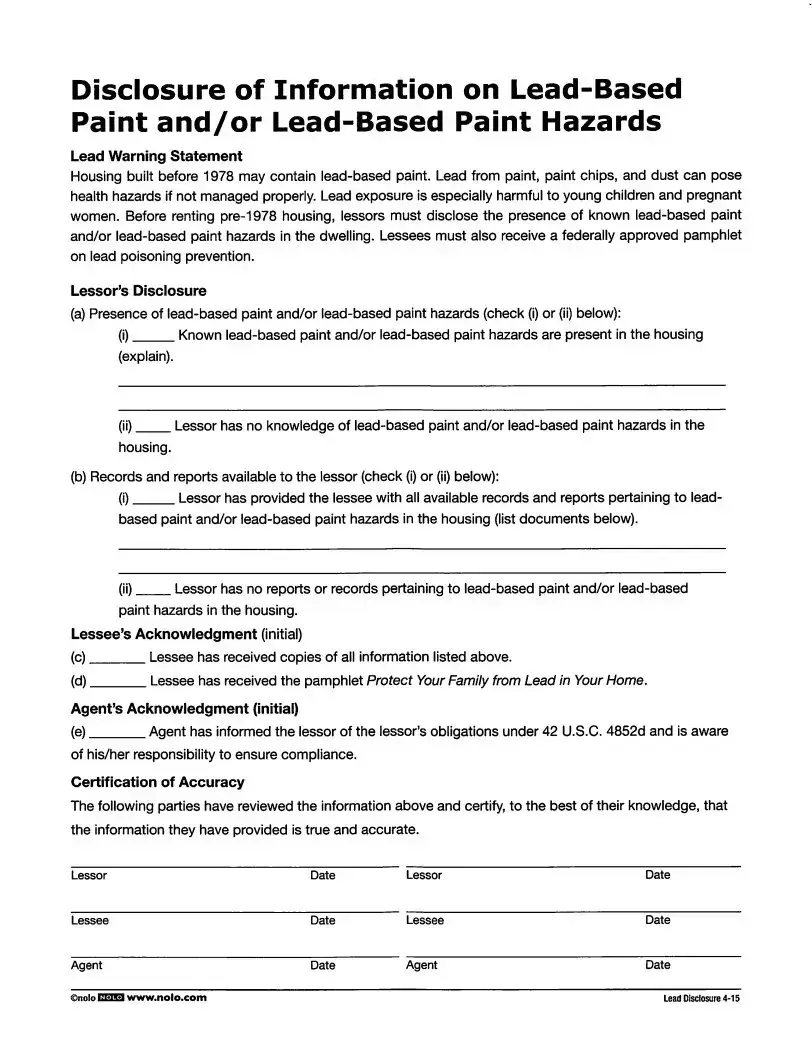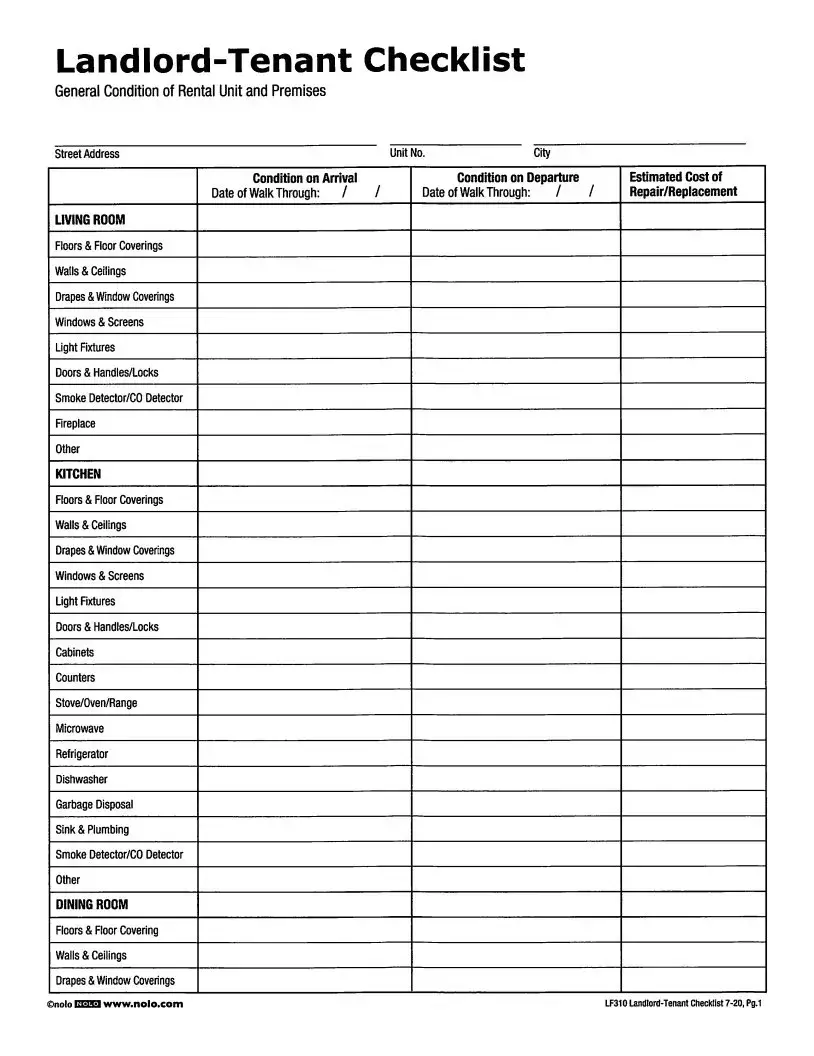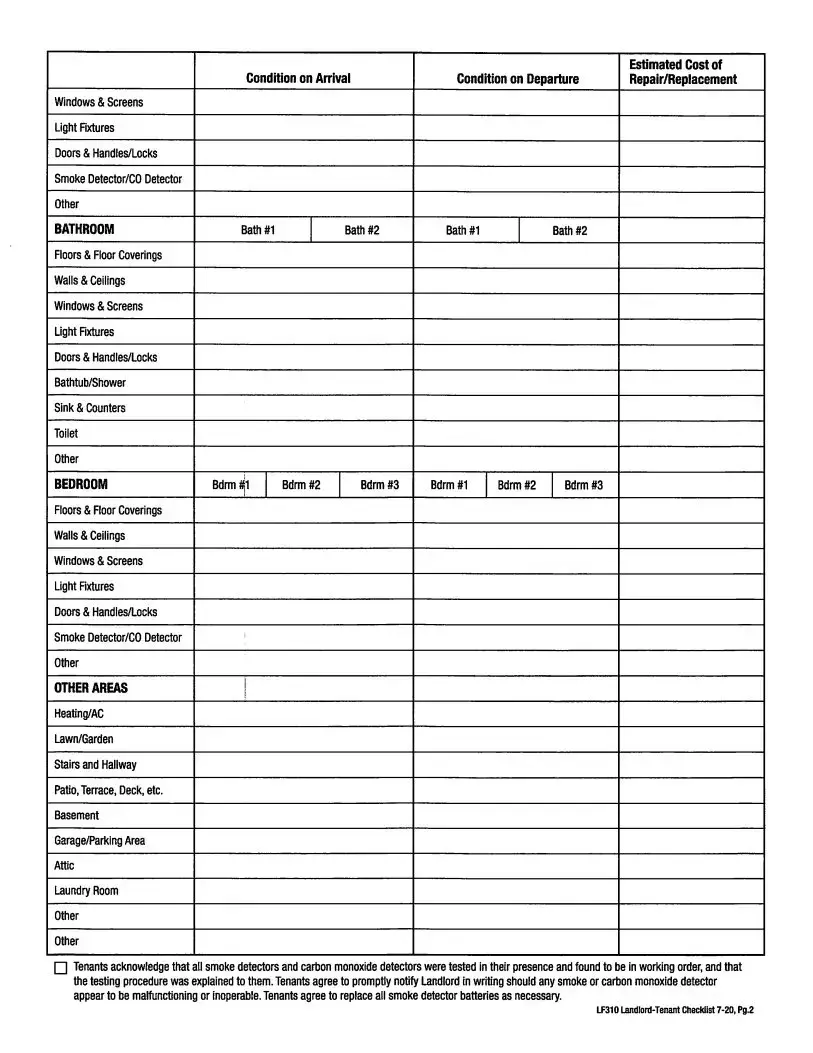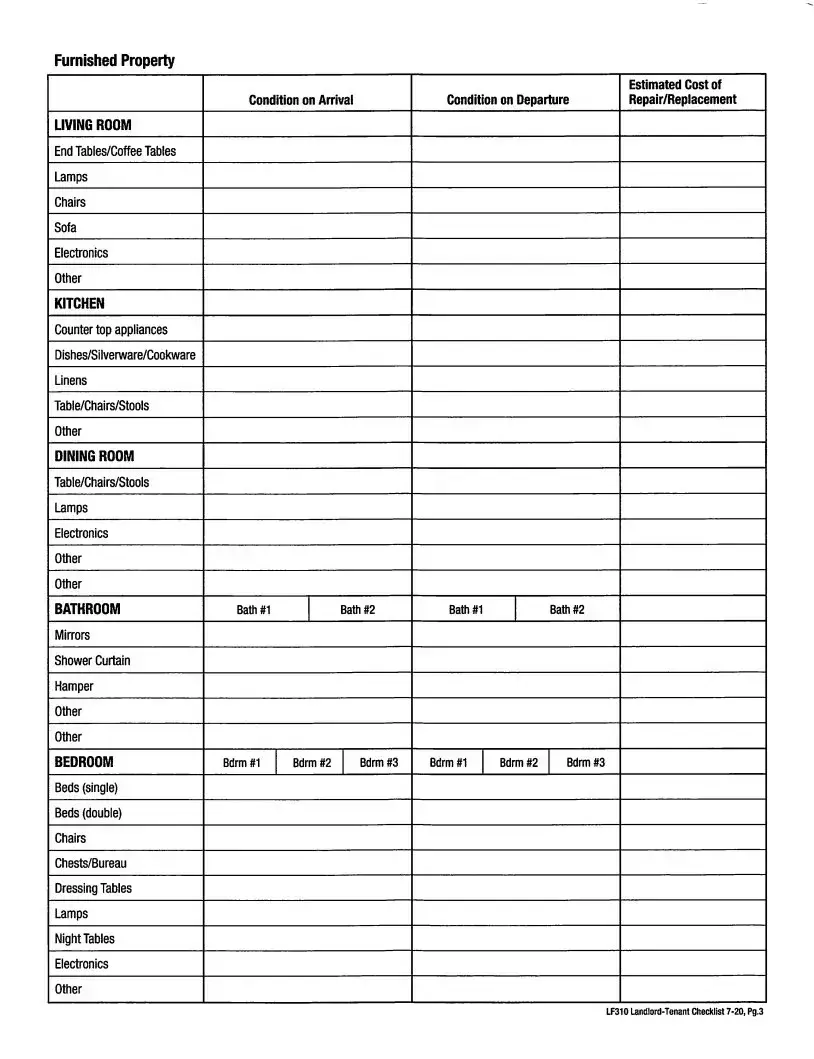Fill a Valid Lf310 Residential Lease Form
The LF310 Residential Lease form is a legal document that outlines the terms and conditions of a rental agreement between a landlord and tenant. It specifies essential details such as the identification of both parties, the premises being rented, and the obligations related to rent payments and security deposits. Understanding this form is crucial for both landlords and tenants to ensure a smooth rental experience.
To fill out the form, click the button below.
Create This Document Online
